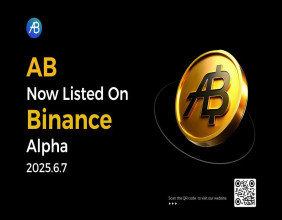- The Big Bang of 1986 marked the pivotal moment when the London Stock Exchange automated its trading processes, revolutionizing the financial market.
- This liberalization initiative ended traditional trading practices, leading to increased competition, transparency, and efficiency in the marketplace.
- The reforms implemented during the Big Bang laid the groundwork for London to maintain its status as a leading global financial center.
The term "Big Bang" refers to a significant transformation in the financial landscape, specifically relating to the London Stock Exchange (LSE) in 1986. This initiative marked a critical turning point in the history of trading, shifting from traditional, floor-based methods to an automated, electronic trading environment. The reforms enacted during this period not only modernized the trading processes but also fostered a more competitive and transparent marketplace.
Historical Context
Prior to the Big Bang, the London Stock Exchange operated under a system characterized by open outcry trading on the floor. This method was labor-intensive and often hindered efficiency, limiting the number of transactions that could be executed in a given timeframe. Additionally, the trading environment was perceived as exclusive, favoring a small number of established brokerage firms while creating barriers for new entrants.
In the early 1980s, the LSE faced increasing pressure to adapt to a rapidly changing financial landscape. As global markets began to embrace technological advancements, the need for modernization became evident. The Financial Services Act of 1986 served as the catalyst for the Big Bang, setting the stage for sweeping changes that would reshape the trading environment.
Key Reforms of the Big Bang
- Automation of Trading: One of the most significant changes introduced during the Big Bang was the automation of trading processes. The implementation of electronic trading systems replaced traditional floor trading, allowing for faster order execution and improved price discovery. This shift reduced the reliance on physical presence, enabling trades to be executed through computer systems.
- Removal of Fixed Commissions: The Big Bang also eliminated fixed commissions for brokerage services, allowing firms to set their own fees based on competition. This reform fostered a more competitive atmosphere, encouraging lower transaction costs for investors and greater price efficiency in the market.
- Introduction of New Participants: With the liberalization of the market, new participants, including foreign banks and investment firms, were able to enter the LSE. This influx of players diversified the market and increased the volume of trading activity, further enhancing liquidity.
Impact on the Financial Landscape
The reforms initiated during the Big Bang had profound implications for the London Stock Exchange and the broader financial market:
- Increased Liquidity: The introduction of electronic trading and the influx of new market participants led to significantly increased liquidity. Investors could buy and sell securities more easily, leading to tighter bid-ask spreads and improved price stability.
- Global Competitiveness: The modernization of the LSE positioned London as a leading global financial center. By adopting innovative trading practices, the LSE attracted international investors and firms, enhancing its reputation as a competitive marketplace for securities trading.
- Enhanced Transparency: The shift to electronic trading provided greater transparency in the market. Investors could access real-time data on prices and trading volumes, empowering them to make informed decisions based on accurate information.
Challenges and Criticisms
Despite its many benefits, the Big Bang was not without challenges. The transition to automated trading raised concerns about market volatility, particularly in the wake of rapid technological advancements. Additionally, the removal of fixed commissions led to increased pressure on smaller brokerage firms, some of which struggled to compete with larger, more technologically advanced firms.
Furthermore, the speed of trading brought about by automation raised questions regarding the potential for market manipulation and the impact of high-frequency trading. Regulators were faced with the task of monitoring these new trading practices to ensure market integrity.
Legacy of the Big Bang
The legacy of the Big Bang is evident in the current structure of financial markets. The reforms set in motion during this transformative period have become foundational elements of modern trading. Electronic trading systems are now standard across exchanges worldwide, and competition among brokerage firms continues to drive down costs for investors.
Moreover, the Big Bang paved the way for ongoing innovations in financial technology, such as algorithmic trading and blockchain solutions, which further enhance the efficiency and security of financial transactions.
Conclusion
The Big Bang of 1986 represents a landmark moment in the evolution of the London Stock Exchange and the broader financial markets. By embracing automation, competition, and transparency, the LSE transformed itself into a modern trading hub that continues to thrive in the global marketplace. The changes initiated during this period not only reshaped the trading landscape in London but also set a precedent for other financial centers around the world. As technology continues to advance, the spirit of the Big Bang remains a driving force behind the ongoing evolution of financial markets, ensuring their relevance and efficiency in an increasingly interconnected global economy.





